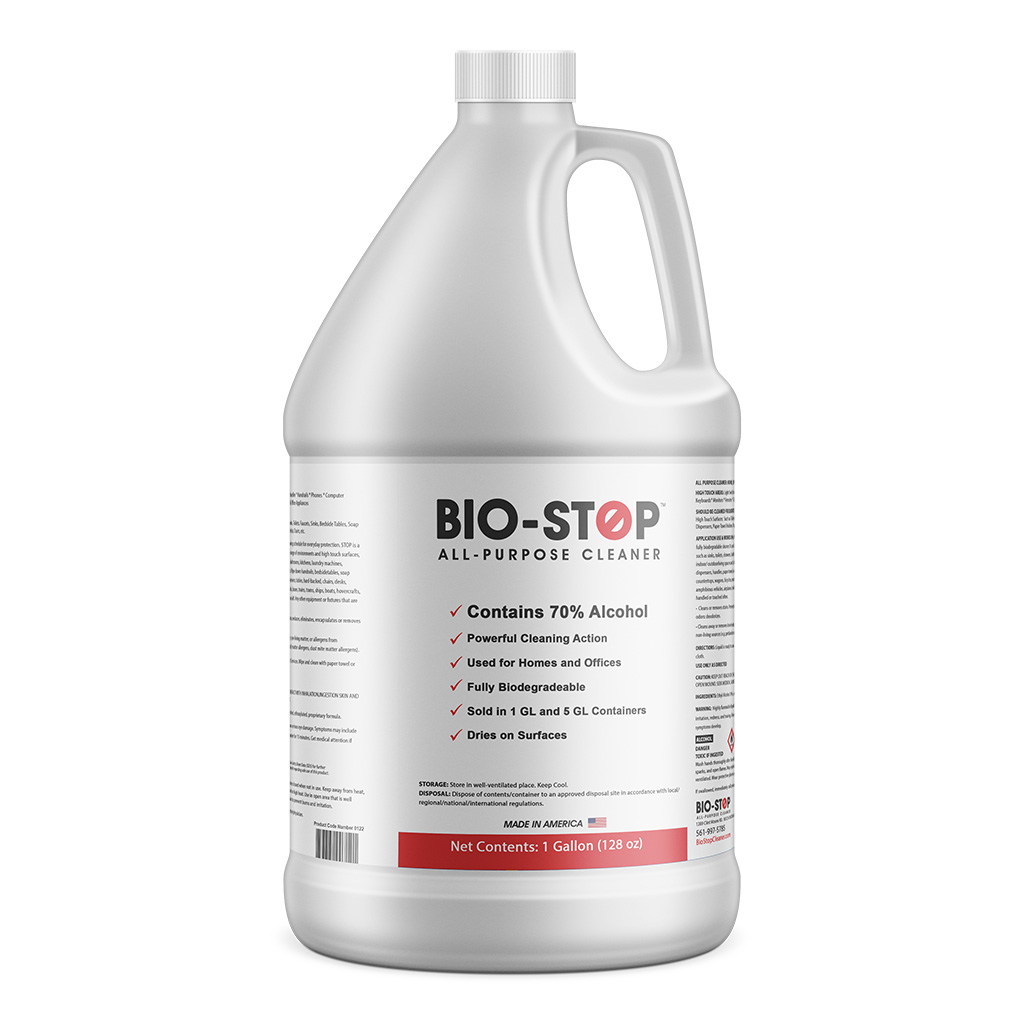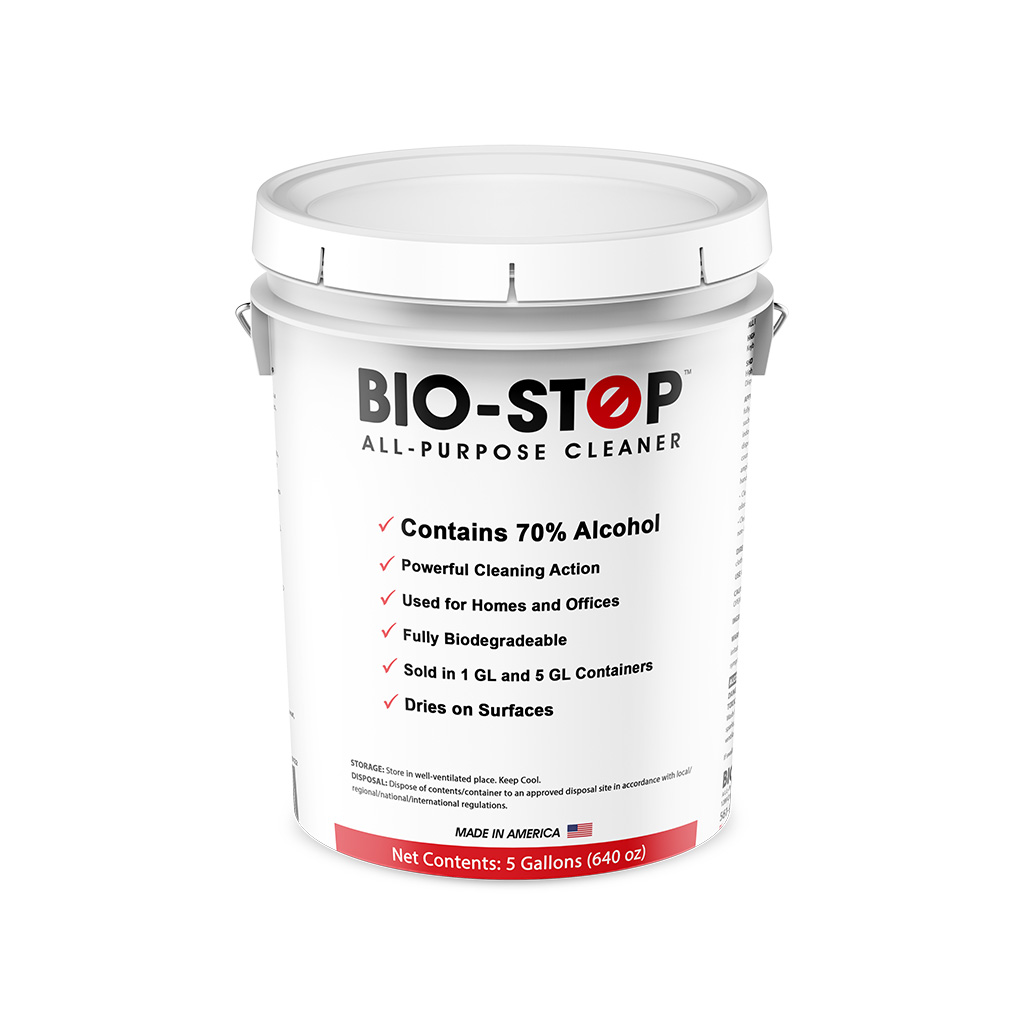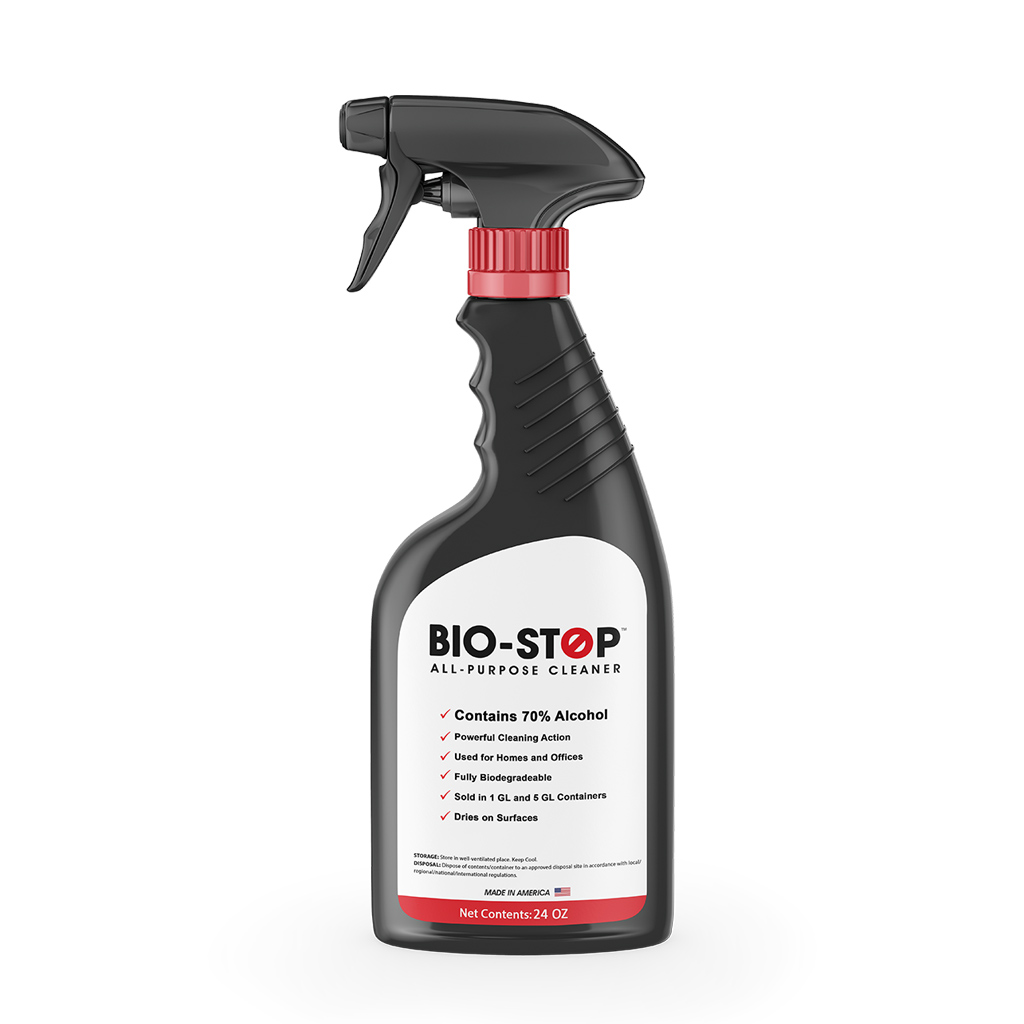Commerical & Home Cleaner
FAQs
Why 70% Alcohol is better
Ethyl alcohol, at concentrations of 60%–80%, is a potent virucidal agent inactivating all of the lipophilic viruses (e.g., herpes, vaccinia, and influenza virus) and many hydrophilic viruses (e.g., adenovirus, enterovirus, rhinovirus, and rotaviruses but not hepatitis A virus (HAV) 58 or poliovirus) 49. Isopropyl alcohol is not active against the nonlipid enteroviruses but is fully active against the lipid viruses 72. Studies also have demonstrated the ability of ethyl and isopropyl alcohol to inactivate the hepatitis B virus(HBV) 224, 225 and the herpes virus, 490 and ethyl alcohol to inactivate human immunodeficiency virus (HIV) 227, rotavirus, echovirus, and astrovirus 491. https://www.cdc.gov/
What happens to Alcohol when you dilute.
In the healthcare setting, “alcohol” refers to two water-soluble chemical compounds—ethyl alcohol and isopropyl alcohol—that have generally underrated germicidal characteristics. These alcohols are rapidly bactericidal rather than bacteriostatic against vegetative forms of bacteria; they also are tuberculocidal, fungicidal, and virucidal but do not destroy bacterial spores. Their cidal activity drops sharply when diluted below 50% concentration, and the optimum bactericidal concentration is 60%–90% solutions in water (volume/volume). https://www.cdc.gov/infectioncontrol/guidelines/disinfection/disinfection-methods/chemical.html
Bio-stop uses a safer and better alcohol grade
Ethanol (Ethyl Alcohol)
Ethanol, also called alcohol, ethyl alcohol and grain alcohol, is a clear, colorless liquid and the principle ingredient in alcoholic beverages like beer, wine or brandy. Because it can readily dissolve in water and other organic compounds, ethanol also is an ingredient in a range of products, from personal care and beauty products to paints and varnishes to fuel.
There are different Types of ethanol alcohol. We only take the higher and greener batch when it is made.
Bio-Stop only uses food grade alcohol. Never fuel.
There are different class and grades of food made ethanol. When you make a batch of ethanol from a certain processed food (say corn). The alcohol comes out in higher and lower grades from that processing of corn.
The lower grades stink and can cause more chemical sensitivity.
Bio-Stop only uses the highest level and safer grade of a batch. That means less smell when spraying product.
How is ethanol made?
In the United States, ethanol is primarily produced from the fermentation of starch in corn grain. In the fuel industry, biorefineries use state-of-the-art technologies to convert grains, beverage and food waste, cellulosic biomass and other feedstocks into high-octane ethanol.
What is Ethanol?
Ethanol is a natural byproduct of plant fermentation and also can be produced through the hydration of ethylene.
Uses & Benefits
Personal Care Products
Ethanol is a common ingredient in many cosmetics and beauty products. It acts as an astringent to help clean skin, in lotions as a preservative and to help ensure that lotion ingredients do not separate, and in hairsprays to help the spray adhere to hair.
Because ethanol is effective in killing microorganisms like bacteria, fungi and viruses, it is a common ingredient in many hand sanitizers. The U.S. Centers for Disease Control and Prevention (CDC) recommends the use of hand sanitizers in situations where soap and water are not available.
Household Products
Ethanol mixes easily with water and many organic compounds, and makes an effective solvent for use in paints, lacquers and varnish, as well as personal care and household cleaning products. As an additive to cleaning products, ethanol is also used as a preservative because it is effective in knocking out organisms that could pose a danger to consumers.
Food Additives
As a food additive, ethanol can help evenly distribute food coloring, as well as enhance the flavor of food extracts. For example, vanilla extract, a common food flavoring, is made by curing and processing vanilla beans in a solution of ethanol and water. In the United States, the Food and Drug Administration (FDA) only allows vanilla to be called “extract” when it has an alcohol or ethanol base.
Fuel
More than 97 percent of U.S. gasoline contains ethanol, typically in a mixture called E10, made up of 10 percent ethanol and 90 percent gasoline, to oxygenate the fuel and reduce air pollution. Ethanol has a higher octane number than gasoline, providing premium blending properties, according to the U.S. Department of Energy. Minimum octane number requirements prevent engine knocking and maintain drivability.
Safety guidelines and GRAS listed
FDA has labeled ethanol as a Generally Recognized as Safe (GRAS) substance, which means that a panel of qualified experts determined that ethanol is safe to use in food products. Because ethanol is a very pure form of alcohol, its consumption and use in foods is regulated by the U.S. Food and Drug Administration (FDA) and the Bureau of Alcohol, Tobacco and Firearms.
Ethanol Safety
To discourage the drinking of pure ethanol from personal care or cleaning products, a “denaturant,” such as a bitter flavoring, is usually added. Denaturants make alcohol unsuitable for human consumption, but does not change the other properties of the substance.
Generally Regarded as Safe GRAS
https://www.accessdata.fda.gov/scripts/cdrh/cfdocs/cfcfr/CFRSearch.cfm?fr=184.1293&SearchTerm=ethanol
Answering Questions
What are foods with ethanol?
Brandied fruits and candies with alcoholic fillings examples are examples of foods with ethanol. Other food products such as plum pudding and fruit cake can contain ethanol if distilled spirts are used for the flavoring and preserving.
What are ethyl alcohol uses?
Ethyl alcohol is used to make alcoholic beverages, for example wine, beer and liquor. Ethyl alcohol can also be used as a solvent.
Why is alcohol an ingredient in mouthwash?
Alcohol is added to mouthwash to dissolve other ingredients and help important active ingredients such as menthol, eucalyptol and thymol penetrate plaque.
Why is alcohol an ingredient in my cough syrup?
Many cough and cold liquids and other OTC (over-the-counter) products contain some alcohol. In the formulation, alcohol helps to dissolve active ingredients or preserve the product.
Bio-STOP
Routine Home & Office Cleaning




